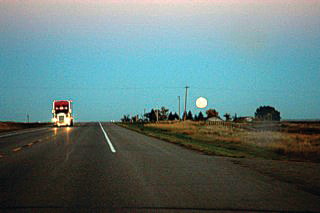I am sitting in the living room, looking out the front picture window at the cedars in our front yard. The mild hurricane force wind is whipping the branches into a frenzy.
The sun is shining, no wait, it’s raining, no, now it’s sunny. Just another Port Alberni day. I pondered the trees and thought about todays column, so here it is: Eight Steps To Perfection. Digitally, that is.
Exposure—too light or too dark? You might have to learn the manual side of your camera if you want total control over it.
In manual, you would open up the lens by one stop or more if the image was too dark, and close the lens down one stop or more if the image was too bright.
Composition—Do not place the subject in the middle of the frame. Mentally divide the image into thirds; one of the thirds should contain the subject. If there are horizontal objects, then they should lead the eye in to the photograph, not lead the eye out of the photograph.
Remember that we read left to right, so the eye will read the photograph the same way.
Depth of field—Large aperture such as f2.8 or f3.5 means shallow depth of field or just your subject will be in sharp focus. Small aperture such as f16 or f22 will have the subject, the foreground, and the background in sharp focus.
Shutter speed—Is the subject moving? If the subject is walking towards you, you would be able to shoot at 1/60 of a second and stop the image. If they are walking across your path then you would have to shoot at 1/500 of a second.
ISO—Go to a higher ISO if you are taking photographs under darker lighting conditions, or with no external light source. You will pay the price for going to a higher ISO such as 3200 or 6400. The price comes in the form of noise. Digital noise that looks terrible and interferes with the image that you are trying to create.
However the old saying comes to mind, “get the shot whatever it takes.”
Focus—Move in close and focus on the subject. Check the foreground and background in the viewfinder or on the screen. Are there telephone poles in the background that appear to be coming out of Grandpa’s head?
If you are photographing outdoors, check the foreground for anything that shouldn’t be there.
Vibration—Hold that camera steady and gently squeeze that shutter button. Under low light conditions prop yourself against a doorway or hold the camera tightly against the doorjamb and aim at the subject.
Contrast—A red dress on a cloudy day will leap out at you. Should you find that you have to shoot a subject on a sunny day between the hours of 10:30 a.m. to 3 p.m., do not despair. Use “fill flash”.
Attach or pop up an electronic flash. Make sure that the subject is in the sun and the flash is set to fire at half a stop less light than the exposure recorded.
Enjoy the summer!
Any questions? E-mail me at nsilverstone@telus.net.
Norman Silverstone teaches photography through North Island College and Eldercollege in Port
Alberni.
